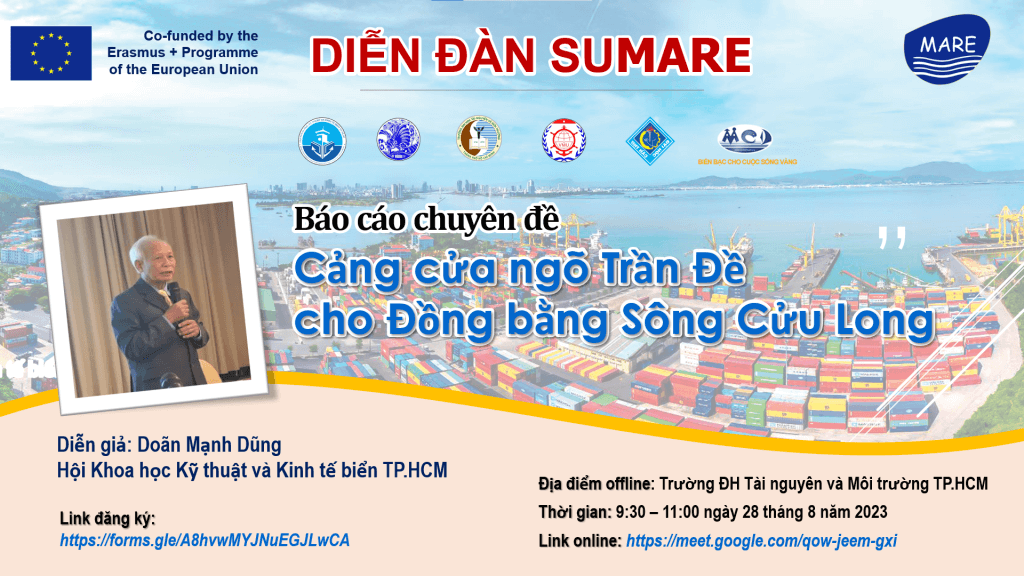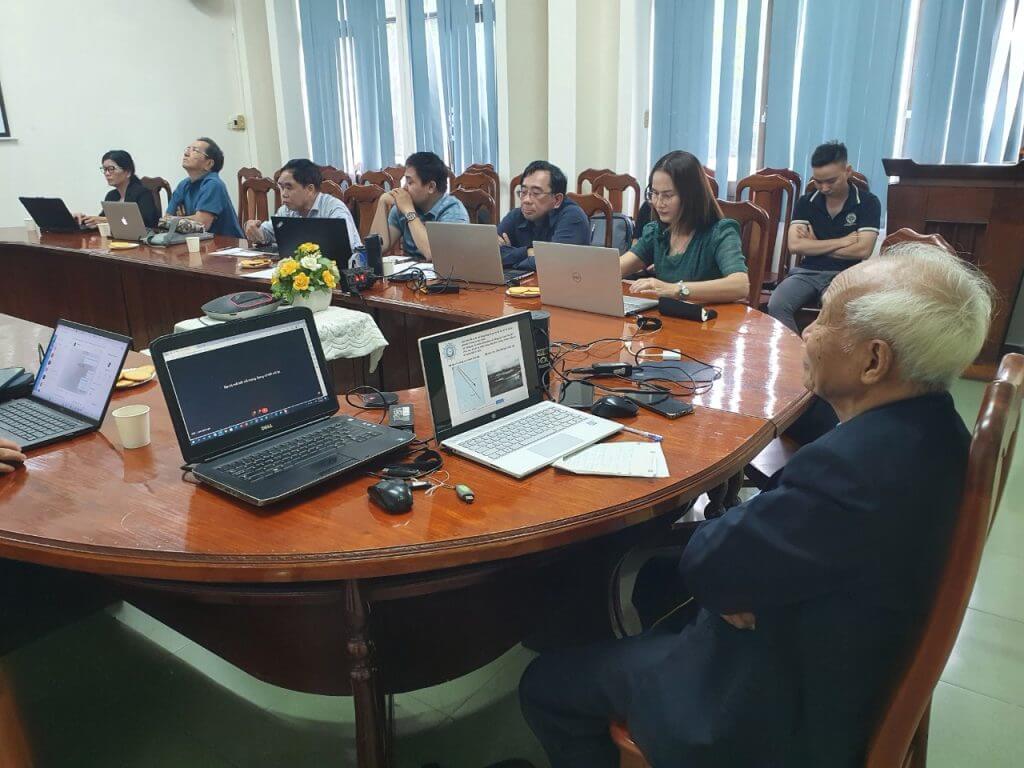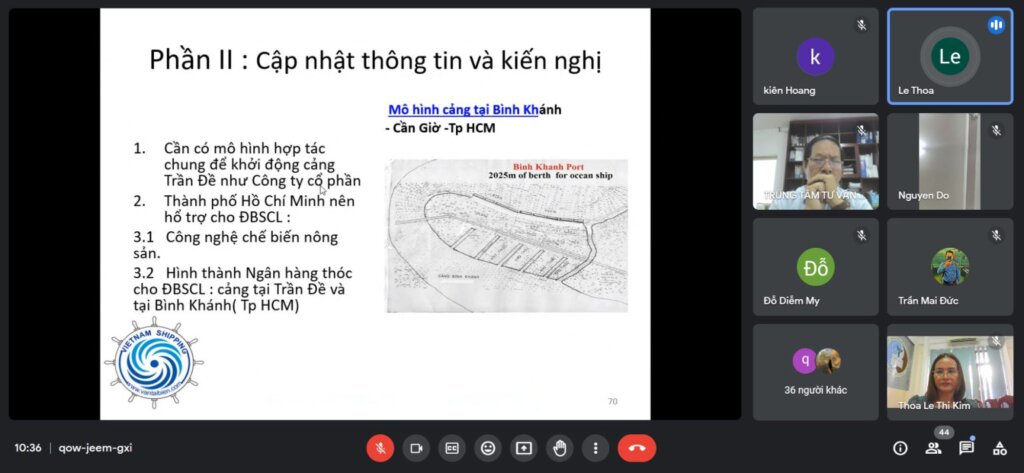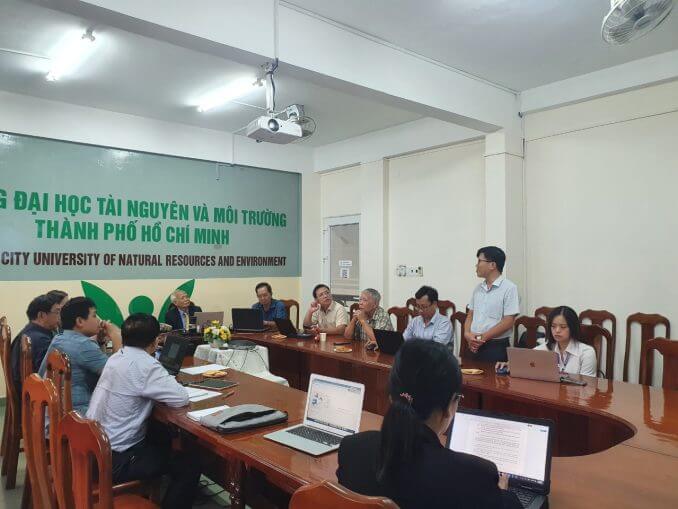Time: 9:00 AM – 12:00 PM, August 28, 2023
Venue: Room B, Ho Chi Minh City University of Natural Resources and Environment (HCMUNRE)
Format: Hybrid (in-person and online)
Presenter: Mr. Doan Manh Dung – Ho Chi Minh City Association of Marine Science, Technology and Economy
Part of: SUMARE Forum – MARE Project

On the morning of August 28, 2023, the thematic workshop “Tran De Gateway Port for the Mekong Delta” was held at the Ho Chi Minh City University of Natural Resources and Environment. The keynote presentation was delivered by Mr. Doan Manh Dung, an expert from the Ho Chi Minh City Association of Marine Science, Technology and Economy.
The event, part of the SUMARE Forum under the MARE Project, brought together numerous researchers, experts, lecturers, and students both onsite and online.

Key Highlights from the Presentation
1. Principles for Seaport Location in the Mekong Delta
Mr. Dung outlined essential criteria when selecting seaport locations, including:
-
Resilience to storms and sedimentation;
-
Capability to accommodate both sea-going and inland vessels;
-
Adequate storage and logistics facilities;
-
Specific conditions for the Mekong Delta such as:
-
Accommodating 30,000 DWT vessels;
-
Prioritizing waterway transport as the main freight channel;
-
Avoiding saline intrusion caused by port dredging and construction.
-

2. Scientific Basis for Tran De Gateway Port
The presentation highlighted scientific foundations based on the “river-to-sea flow” model and the theory of “natural sand dike” along the East Coast of Vietnam. These support choosing the Tran De estuary (rather than the Gulf of Thailand) as an optimal port location. The proposed plan promotes using:
-
Natural internal waterways;
-
Constructed sand dikes;
-
Dredged material to expand and elevate sandbanks, following examples from Van Phong and Cam Ranh Bays.

3. Core Strategic Considerations
Tran De Gateway Port adheres to the following principles:
-
Southern-facing bay orientation to resist ocean sediment and storm impact;
-
Channel resistance to dynamic interactions between river and ocean currents;
-
Capability to handle 30,000 DWT vessels;
-
Easy access for inland waterway vessels;
-
Avoiding mouth dredging that might lead to saltwater intrusion.

Recommendations for National Development
Mr. Dung proposed the following to the Vietnamese Government:
-
Include the Tran De Gateway Port project in national planning and feasibility studies;
-
Seek international sponsorship for pre-feasibility assessments;
-
Apply the Public-Private Partnership (PPP) investment model, with the State retaining a leading role in coordination;
-
Establish a joint-stock company to initiate the project;
-
Encourage support from Ho Chi Minh City for the Mekong Delta in:
-
Agricultural product processing technology;
-
Formation of a Regional Rice Bank.
-

Participants
The event welcomed over 40 participants from a range of sectors and institutions, including:
-
Ho Chi Minh City Maritime Science and Technology Association;
-
Institute of Marine Engineering;
-
Institute of Oceanography;
-
Can Tho University, HCMUNRE;
-
Vietnam Maritime University (VMU);
-
Environmental and construction consultancy firms.

Conclusion
The report emphasized the strategic and sustainable potential of Tran De Gateway Port as a crucial infrastructure for boosting logistics, trade, and economic growth in the Mekong Delta. The session concluded at 12:30 PM with engaging discussions and valuable feedback from attendees.



